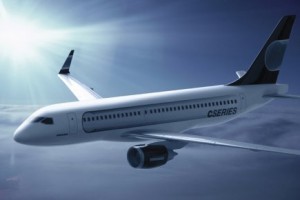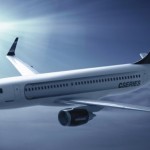With the first flight of the CSeries CS100 currently scheduled for the end of 2012, Bombardier announced its flight test programme that will certify the CSeries aircraft by the end of 2013.

Bombardier CSeries Aircraft
The 2,400 hour CS100 flight test programme, will be operated by a total of five airframes. The first airframe will be the CS100’s Complete Aircraft Static (CAS) test article, followed by five flight test vehicles (FTV) and the structural fatigue airframe.
FTV1, which is slated to fly by the end of 2012, will investigate the CS100’s operating envelope and undertake aeroelastic flutter evaluations. FTV2 will focus on systems integration, including the jet’s avionics and fly-by-wire flight control systems certification program. FTV3 will test the performance of the aircraft and its Pratt & Whitney PW1500G engines. FTV4 will duplicate the workload of FTV2, splitting the systems certification process between the two test aircraft. FTV5 will be the cabin demonstrator, and also will be the aircraft that will be used for systems functionality and reliability (F&R) and extended operations (ETOPS) testing.
Bombardier’s stated goal is to deliver the CS100 aircraft certified for 120 minutes ETOPS operations at entry into service at the end of 2013. A further six-month ETOPS testing program will extend the aircraft’s ETOPS certification to 180 minutes.
Systems commissioning for Aircraft 0 is currently underway at Bombardier’s complete integrated aircraft systems test area (CIASTA) at its Mirabel, Quebec facility outside of Montreal, with its production standard pedestal, throttle quadrant and Full Digital Authority Engine Control (FADEC) software having been activated before the end of 2011.
Bombardier has not yet finalised the required ground test hours for certification as it seeks to conduct tests that would otherwise be completed by the FTVs by employing CIASTA’s Aircraft 0.
The last two test aircraft, FTV6 and FTV7, will be employed for the larger CS300’s flight test certification due in to be completed in 2014.
Bombardier also plans to deliver the majority of the flight test aircraft to customers for revenue service. However, FTV5 will be retained to understand the dispatch reliability of the new narrow-body aircraft and its systems and to provide a platform for future upgrades that may be considered for the CSeries program.

